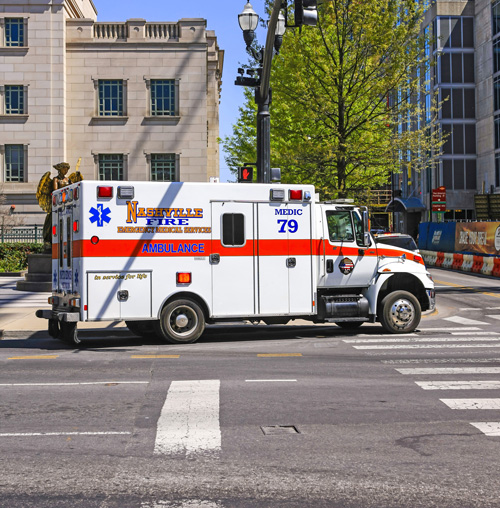Earlier this year, for several 12-hour shifts over a 12-week period, two paramedics with the Nashville Fire Department worked with sensors placed on both wrists and both forearms, transmitting body motion and muscle activity in exquisite detail to a server at Vanderbilt University Medical Center. Meanwhile, a researcher seated inside the ambulance logged the procedures performed on each patient.

Daniel Fabbri, PhD, assistant professor of Biomedical Informatics and Computer Science, is leading a project to improve handoff of incoming emergency patients at military field hospitals and civil hospitals.
The idea is to automatically generate patient acuity scores and abbreviated care records of in-transit patient procedures (cardio-pulmonary resuscitation, intubation, etc.) based on computer interpretations of signals from sensors and video cameras.
On Nov. 18 at the American Medical Informatics Association Annual Symposium in Washington, D.C., Fabbri’s team presented results of the feasibility work with Nashville Fire Department EMS.
“We wanted to start out with a small study to assess the technology and see what practical issues might arise, and this work with Nashville Fire proved quite fruitful. Due to privacy considerations we did not use video, but our initial findings bode well for the feasibility of our project,” Fabbri said.
They call their prospective system Automated Sensing Clinical Documentation. It will operate entirely in the background, leaving medics free to focus on the patient.
“The resulting documentation will be extremely valuable for emergency room physicians and trauma surgeons who want to know what care has been provided,” Fabbri said.
“Technology continues to advance,” said Joaquin Toon, Nashville Fire Department EMS quality improvement officer. “To think that a civilian paramedic or a military medic’s hand and body movements can generate a medical record or alert the hospital of an incoming patient’s condition is phenomenal. Nashville Fire Department was excited to partner with Vanderbilt Emergency Medicine in this research,” he said.
Fabbri’s co-authors for the feasibility study included Vanderbilt colleagues from Biomedical Informatics, Emergency Medicine, Anesthesiology and Electrical Engineering and Computer Science, joined by a colleague from Oregon State University. The VUMC project is supported by a $1.7 million research grant from the U.S. Department of Defense.














